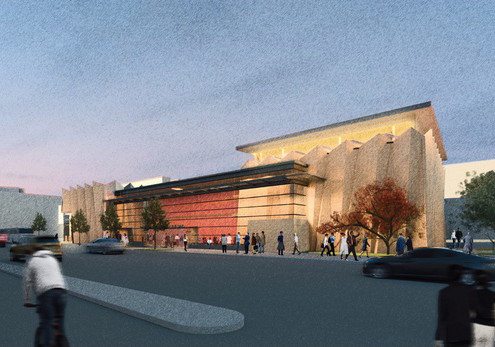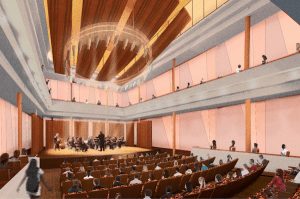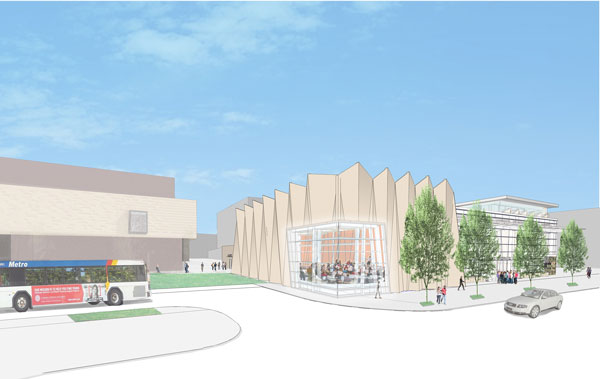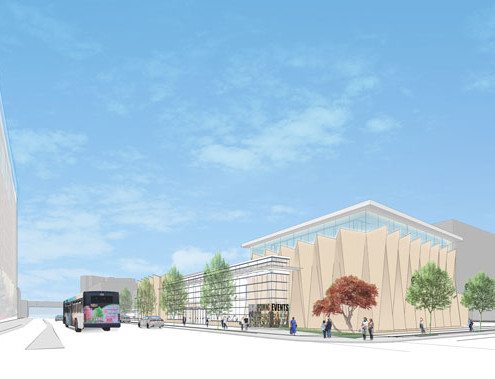January 26, 2017
CONTACT:
Beth Larson, beth.larson@wisc.edu
Katherine Esposito kesposito@wisc.edu
UW-Madison Musicians to present “Thank You” concert to Mead Witter Foundation
The University of Wisconsin Mead Witter School of Music will bring two quintet ensembles to the Performing Arts Center in Wisconsin Rapids for a free concert on Thursday, February 9 at 7:30 p.m. The concert celebrates the Mead Witter Foundation’s $25 million gift to the University of Wisconsin for construction of a new performance center in Madison. The PAC is located at 1801 16th St. South, Wisconsin Rapids.
Following an afternoon of clinic sessions with local students, the Wisconsin Brass Quintet, the Wingra Wind Quintet, and Scott Teeple, UW-Madison conducting professor, along with the Lincoln High School Wind Ensemble will present the free public concert designed to educate as well as entertain. The February 9 concert is open to the public free of charge. Besides thanking the Foundation for its support, the concert furthers the UW mission of public service through spreading the “Wisconsin Idea.” About 50 music students from area high schools are expected to attend the afternoon clinic sessions and evening concert.
In the fall of 2015, the Mead Witter Foundation commemorated a century-long relationship between the Witter and Mead families with the University of Wisconsin by providing major funding that enabled the UW-Madison to construct its new music performance building in one phase, rather than in multiple phases over time. In appreciation of the gift, UW-Madison named its music school the Mead Witter School of Music, and the large concert hall within the performance building will be known as the Mead Witter Foundation Concert Hall. The new performance building will be sited at the corner of University Avenue and Lake Street adjacent to the Chazen Museum of Art in Madison.

Interior of Mead Witter Foundation Concert Hall. Image courtesy of Holzman Moss Bottino Architecture and Strang Architects.
Wisconsin Brass Quintet
Regarded as one of the “superb brass ensembles in the USA” (Musicweb International) and praised for “remarkable musicianship and versatility” (International Trumpet Guild Journal), the widely acclaimed Wisconsin Brass Quintet (WBQ) has maintained a position at the forefront of brass chamber music since the group’s founding in 1972. WBQ is one of three faculty chamber ensembles in-residence at the University of Wisconsin-Madison School of Music. In addition to its regular concert series on the campus, the Quintet performs extensively throughout the Midwest and nationally, including appearances in New York at Weill Recital Hall and Merkin Concert Hall. Current members of WBQ are John Aley and Matthew Onstad, trumpets; Daniel Grabois, horn; Mark Hetzler, trombone; and Tom Curry, tuba.
Wingra Wind Quintet
Since its formation in 1965, the Wingra Wind Quintet at the University of Wisconsin-Madison Mead Witter School of Music has established a tradition of artistic and teaching excellence. The ensemble has been featured in performance at national conferences such as MENC (Miami), MTNA (Kansas City), and the International Double Reed Society (Minneapolis). In addition to its extensive home state touring, the quintet has been invited to perform at numerous college campuses, including the universities of Alaska-Fairbanks, Northwestern, Chicago, Nebraska, Western Michigan, Florida State, Cornell, the Interlochen Arts Academy, and the Paris Conservatoire, where quintet members offered master classes. New York Times critic Peter Davis, in reviewing the ensemble’s Carnegie Hall appearance, stated “The performances were consistently sophisticated, sensitive, and thoroughly vital. Current members of Wingra Wind Quintet are Stephanie Jutt, flute; Aaron Hill, oboe; Marc Vallon, bassoon; Joanna Schulz, horn; and Amy McCann, clarinet.





